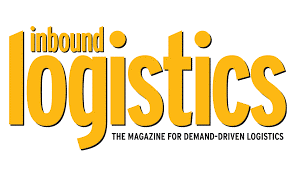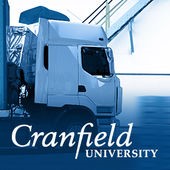
by Fronetics | Jun 13, 2017 | Blog, Content Marketing, Logistics, Marketing, Supply Chain
Follow these steps to equip your content writers with all the institutional knowledge and background information they need to create top-quality content.
Content drives consumers to your website, convinces them of the quality of your products/services, and ultimately helps convert those leads into customers. So, it goes without saying, the people writing your content are pretty important to your business.
Some companies rely on various employees, who are known to be good writers, to create their content. These people often struggle to fit writing into their full-time job, or don’t have SEO- or marketing-writing expertise. And if your business needs someone to produce many different kinds of content — like blog posts, emails, reports, articles for industry publications, and other marketing collateral — some non-writers will struggle with the versatility necessary to create it all.
Given that content is the backbone of a content marketing program, hiring a professional writer is crucial. Some companies, however, are nervous about finding content writers who are fluent in the technical language of their business. Or, they’re worried about the time it will take to get someone up to speed on all the ins and outs of the company and industry.
But here’s the thing: Great writing can’t be taught, but subject matter can. And it’s not as difficult as you might imagine. In fact, here are some best practices for turning your content writers into supply chain experts.
3 steps to make content writers supply chain experts
1. Teach them what they don’t know.
It’s easy for a content writer to conduct his or her own research to learn about industry topics, trends, terminology, and other concrete facts and news. But it’s less likely they’ll pick up on all the things that go unsaid in industry media and resources. That’s where you can help.
Provide your writer with information on all the landscape’s inner-workings. Consider answering these questions:
- Who are the key players in this space and why? Who are the most respected voices, and who are otherwise people to watch?
- How does this space make money?
- Who is the target buyer — demographics, pain points, strengths and weaknesses, etc.?
- What ideas are considered old-fashioned or taboo and why?
- What ideas are commonly accepted? Which are starting to become more accepted?
- What regulations or governing principles are relevant in this space?
- How does a company in this space measure success?
- What other internal politics or tidbits about institutional history would be helpful for someone to know?
2. Give them a watch list.
This goes hand in hand with the previous step, but it’s worth elaborating on. You want the writer to know the key players in the space so s/he can become familiar with the content and media your prospects are consuming.
Provide your content writer with a list of the thought leaders in the industry and where they are active (blogs or LinkedIn Pulse, for example); your competitors and their business partners or clients; and industry publications or media outlets that professionals in your business and your clients read on a regular basis. Who are the space’s must-follows on Twitter? Are there podcasts or newsletters that everyone in your line of business subscribes to? Do all of your industry peers receive some kind of publication?
A good writer will glean a lot of information from studying these people, businesses, and publications. They will also understand where the bar is set, and thus be able to strive to achieve that or exceed it in terms of value and quality.
3. Share your data.
The most successful writing teams I’ve ever been a part of have been well informed about business performance. Though writing is largely a creative process, it’s important that writers understand how their contributions are affecting the organization as a whole — whether that’s good news or bad news. They will feel more invested in the success of your organization, for one, but also it will help them adjust what they’re doing to accommodate what’s working and to eliminate what’s not.
You don’t have to get into the nitty gritty of financials, but some general information about how the company is performing is helpful for general knowledge. Otherwise, provide your writers with a regular report on the metrics you use to analyze the success of your content: pageviews, downloads, time on page, etc.
Follow these three steps, and you’ll ensure your writers are fully equipped to create informed, well-written content.
Related posts:


by Fronetics | Jun 12, 2017 | Blog, Logistics, Strategy, Supply Chain
These podcasts bring the latest news and thought leadership in the supply chain and logistics industries right to your earbuds.
I used to think that podcasts were a hip form of new media that millennials used to further their iPhone addictions. Fast forward a few years, and the benefits of having news and entertainment in your earbuds has converted me to a podcast fan.
Podcasts are a series of digital audio files that listeners can subscribe to. Think of it as the DVR of your smartphone. Podcasts, like cable shows, come in all shapes and sizes. Their popularity has skyrocketed since the smartphone became as necessary as car keys, giving you to-the-minute facts and information, right in the palm of your hand.
If you’re looking to increase your podcast listening, here are five that highlight topics of interest to supply chain and logistics professionals.
5 supply chain and logistics podcasts

Talking Logistics is an online video talk show and blog featuring interviews with industry thought leaders and newsmakers by supply chain and logistics analyst Adrian Gonzalez.
Gonzalez runs the show like a conversation with smart friends, making it easy to follow. Featured guests include supply chain and logistics executives from leading manufacturing and retail companies, professors from leading academic institutions, executives from third-party logistics and technology companies, and authors. The show provides supply chain and logistics professionals an interactive and engaging platform to learn and network with other practitioners and thought leaders.

Supply Chain Insights, a research and advisory firm, hosts this weekly podcast that covers a variety of topics, from global thinking to voice of the customer. Many episodes focus on technology and innovation. Nearly all of Supply Chain Insights’ podcasts feature executives and experts sharing their logistics insights. Straight Talk focuses on delivering independent, actionable and objective advice for supply chain leaders.

The SupplyChainBrain podcast features in-depth conversations with industry practitioners, academics, consultants, and other experts from every imaginable aspect of supply chain management and international trade. New episodes of the podcast have been published every Friday since its launch in 2013, touching on important topics like retail shifts, blockchain innovations, labor shortages, and the Internet of Things.

A product of the leading magazine Inbound Logistics, this podcast provides relevant information within the supply chain management world, as told by influential thought leaders in the industry. Each episode features a different special guest, who brings his/her unique opinions regarding topics such as logistics, supply chain, cargo, freight, transportation, and education.

Cranfield University School of Management in Cranfield, England, has nearly 50 years of experience educating business leaders via masters, MBA, executive education, and consultancy programs. The Centre for Logistics and Supply Chain Management is celebrating 35 years of thought leadership in logistics, procurement, and supply chain management. The free podcast, Supply Chain and Logistics Management, covers topics such as logistics and transportation management.
Related posts:

by Jennifer Hart Yim | May 30, 2017 | Blog, Logistics, Supply Chain, Talent
Is the Supply Chain talent gap problem really a talent management problem?
This guest post comes to us from Argentus Supply Chain Recruiting, a boutique recruitment firm specializing in Supply Chain Management and Procurement.
As a recruitment company completely specialized in Procurement and Supply Chain, we’re interested in following the so-called “talent deficit” in the field from all angles and perspectives. The fact is, it’s becoming harder for companies for find the talent that they need for these positions as baby boomers retire and the function evolves. As trade publication Supply Chain 24/7 puts it, “study after study has shown that for every new Supply Chain Manager entering the workforce, two (or more) are retiring.”
It’s a serious issue.
But the more you look at this issue, and the more perspectives you seek, the more you realize how complex it truly is: We’re witnessing a generational shift in the Supply Chain industry whereby more young people are entering the field. Technology has developed rapidly over the past 10 years, with big data, 3-D printing, Blockchain and automation promising to upset the apple cart completely over the next 10. It’s not just that people are retiring. It’s that finding people who have a depth of understanding of how to harness these new technologies is going to be a major driver of company competitiveness over the coming years, and they’re hard to find.
That growing demand is part of what makes Supply Chain such an attractive field for young people who are interested in business that combines global exposure, strategic problem solving, technology, and data. More universities and colleges are offering Supply Chain Management programs. But the skills required are always evolving, and how can the industry ensure that people are adequately skilled when they themselves can’t always predict the technological picture 3-5 years down the road?
Lack of talent management?
There was a thought-provoking blog post on this topic in Supply Chain Management Review this week by Supply Chain Professor Michael Gravier. Titled, “Lack of Supply Chain Talent – or Lack of Talent Management?”, the post talks about the talent deficit from the perspective of someone who’s very much in the trenches of preparing tomorrow’s Supply Chain leaders for tomorrow’s workforce.
Professor Gravier’s point is pretty simple, but pointed: “Young people who go into Supply Chain and manufacturing jobs complain that employers demand creativity during the hiring process, yet have no tolerance for new ideas in the workplace.”
In other words, companies are eager to lock down the highest-potential candidates — which only makes sense because of course you want the best talent, and of course you don’t want that talent going to your competitors. But once those candidates are placed? In Gravier’s eyes, organizations don’t necessarily take the next step and let them contribute in a creative way. For Gravier, millennial workers — especially high performers — specifically demand a higher level of engagement and skill growth than employers might be accustomed to. And, by putting these new workers in transactional roles without much opportunity for growth, companies are jeopardizing their long-term talent goals and putting themselves in danger of falling behind.
As Gravier puts it: “There’s evidence that companies show little commitment to developing and rewarding needed skills, and companies hire top-notch graduates in order to avoid having to deal with people problems later, which shows that there’s likely insufficient training and support as personnel move into supervisory positions.”
The reality for Supply Chain
A few things are worth mentioning from our perspective: for one, there’s always going to be a low person on the totem pole at any company. Workers have always had to “pay their dues” for the first couple years of their career, no matter the field, whether it’s doing dishes or preparing purchase orders. So it’s a bit unreasonable for recent Supply Chain grads to expect highly strategic roles right out the gate. For another, it makes sense for companies to want to hire the best people now, even if it means putting them in roles where they might not be developing as quickly as they would like?
On the other hand, if companies truly want to get ahead of their competitors, doesn’t it make sense to put resources into training, mentorship and skills development?
Whatever you make of his argument, it’s pretty easy to agree on one thing: Companies need to do all they can not only to attract great candidates, but to help them thrive and grow — both to keep those candidates’ eyes from wandering other opportunities, and to unlock the innovation that these candidates can provide.
But what do you think? Are companies developing junior prospects in Supply Chain well, or leaving them in entry-level positions for too long? Are you near the beginning of your career? Or does your company hire a lot of junior Supply Chain staff? Let us know in the comments!

by Jennifer Hart Yim | May 11, 2017 | Blog, Current Events, Logistics, Manufacturing & Distribution, Supply Chain, Transportation & Trucking, Warehousing & Materials Handling
This post comes to us from Adam Robinson of Cerasis, a top freight logistics company and truckload freight broker.
Imagine a world where automation comes together with technology to deliver products without human intervention. An order is placed by a consumer. 3-D printers pick up the details and print the finished product. It’s then picked by robots from the shelves, packaged and placed into a self-driving truck. The trucks leave the facility, and drones are automatically dispatched from the truck to deliver products while moving. The truck never stops until arriving for reloading.
This example generates a huge amount of data that can leverage in the supply chain. But, the same data can have a drastic impact on transportation planners and agencies around the globe. While this example may still be a few years off, it is important that you understand how the top emerging trends in automation will shape supply chains and transportation processes in the coming years.
The Standard Definition & Components of Automation
Today: There is a standard definition of automation in the supply chain. Anything that can be handled via today’s computer systems can be automated. This includes billing, generation of bills of lading, compliance reports, and even movements throughout a factory or warehouse floor.
Historically, automation has been applied to virtual processes, like order auditing or customer service reports. However, the trends in automation are changing to reflect actions that function more like artificial intelligence, not just a search and locate program on the computer.
Additive Manufacturing
What is it?
Additive manufacturing includes all actions in the supply chain that can enhance existing factory production, if not replace it entirely. Additive manufacturing may be handled manually, but automating this process is as simple as turning on the power and connecting to the Internet of Things (IoT).
For example, additive manufacturing might involve the use of 3-D printers to create replacement parts at the store for consumers.
Today’s status: Unfortunately, the capacity of 3-D printers remains in infancy, capable of only producing simplified parts out of liquid polymers.
Virtual Reality Comes to the Forefront.
Meanwhile, Google Glass and other virtual reality tech are changing how customers complete their orders. In addition, the same technology can be overlaid with augmented reality to give repair technicians and individuals greater resource access when making repairs, checking order contents and fulfilling orders.
For example, augmented reality glasses will soon detect package dimensions and classify the package according to dimensional pricing models.
Today’s Status: Today, this technology is limited to automated identification and data capture (AIDC) applications. Advancements in virtual reality over the past year indicate its future might be much closer than “meets the eye.”
Additive manufacturing will gradually move products from warehouses and distribution centers to be closer to end-users. As a result, the amount of last-mile traffic may increase.
Robotics Enhance Inbound and Outbound Logistics for Shippers.
Another trend in automation involves robotics. By definition, robotics are the icons of automation. They perform functions at the request of a system or person, but more of today’s robotic systems are performing duties upon request from an order fulfillment system.
The order process automatically notifies robots in warehouses and triggers the flow of processes as seen in the opening example.
Robotics Improve Inbound and Outbound Logistics.
Robotics are not isolated to warehouse pulling for outbound logistics. They can be used to manage inbound and outbound processes and strategy. Through trends in automation and robotics, supply chain companies will have the tools and resources necessary to ramp up throughput and decrease product cycle from order to delivery. Therefore, more trucks and drivers will be needed, but the looming driver shortage and capacity crunch will trigger another automation trend.
Autonomous Vehicles/ Trucks
Automation begets automation. With advances in technology and the IoT, most major companies, including Uber, Facebook, Google, and Amazon, have launched autonomous vehicle and truck pilot programs.
These driverless vehicle programs will give supply chains access to a new inexhaustible resource for moving products, overcoming the challenges inherent in the driver shortage and capacity crunch.
The driver shortage and capacity crunch are likely to come to a head in 2017, as consumers demand more product, at lower costs and faster than ever before.
Some setbacks have occurred, like the first self-driving car wreck earlier this year. With each setback and challenge, companies have pushed back to overcome the obstacles.
In response to increased interest in driverless vehicles and trucks, the National Transportation Safety Board (NTSB) has issued recommendations and created an advisory panel to review ongoing driverless vehicle advancements and maintain public safety.
Transporters and supply chains will respond to this direction by leveraging the trends in automation and power of data to ensure compliance with increased government oversight, through the agencies you represent.
Companies have already tested cross-country driverless trucks, albeit with a person ready in the cab to take over in the event of a system failure. However, the wide-scale deployment of this level of driverless trucks is far from implementation.
In the interim, more automated vehicle systems will work in tandem with drivers to enhance safety and maintain vehicle control. Similar systems are already deployed in crash and pedestrian detection systems, automated braking and tracking control in today’s vehicles. It is not difficult to apply today’s technology and automated features to the fleets and drivers of 2017.
Trends in Automation: Whats the Potential?
The potential applications of this type of technology can include real-time traffic condition monitoring and warnings, redirecting traffic before pile-ups and accidents occur, similar to Google Maps’ capacity to show traffic congestion in real-time.
Data through such systems can automatically feed back into transportation planners’ systems to automatically change signal phase and timing and enable immediate rerouting or adjustment of traffic flow on a broader scale.
Related posts:

by Jennifer Hart Yim | May 10, 2017 | Blog, Current Events, Logistics, Strategy, Supply Chain
Updated January 16, 2025
Starbucks’ closely managed supply chain may be the key to the premium coffee giant’s success.
Highlights:
- Starbucks attributes much of its success to its vertically integrated supply chain, managing every step from coffee bean sourcing to final cup, allowing for consistent quality control and ethical sourcing practices across its global operations.
- Unlike its competitor Dunkin’ Donuts, which outsources most operations, Starbucks directly manages relationships with 300,000 coffee growers worldwide through its Coffee and Farmer Equity (C.A.F.E.) standards, ensuring both quality standards and ethical practices.
- This supply chain strategy has contributed to Starbucks’ significant market dominance, with the company generating $32.2 billion in revenue in 2023 and operating nearly 37,000 stores globally, far outpacing Dunkin’ Donuts’ presence and revenue.
The Secret is the Supply Chain, According to Starbucks
The international coffee giant has widely studied and acclaimed supply chain management practices, which, according to some, make Starbucks’ coffee and customer experience superior to those of its competitors.
So, what exactly is Starbucks doing differently than other international coffee retailers? Is its coffee truly better?
The Standards
Starbucks uses a vertically integrated supply chain, which means that the company is involved in every step of its supply chain process, all the way from the coffee bean to the cup of coffee sold to consumers. The use of a vertically integrated system means that Starbucks works directly with its nearly 300,000 worldwide coffee growers. The company believes that interacting directly with farmers ensures that all of its coffee beans will achieve the same quality and flavor standards.
Starbucks also works directly with growers because the company is committed to only selling ethically sourced, Fair Trade coffee. The company even has its own Coffee and Farmer Equity (C.A.F.E) standards and Coffee Sourcing Guidelines (CSG), which require that all suppliers must meet certain ethical, sustainability, and quality standards. Starbucks uses a stringent vetting process to ensure its growers meet and adhere to these guidelines.
Not only do the C.A.F.E. practices and CSG benefit Starbucks, they also provide advantages for suppliers. The guidelines protect workers’ rights and ensure that all growers have safe and humane working conditions. Suppliers also must adhere to minimum-wage requirements and commit to not using child or forced labor.
Lastly, as a part of its C.A.F.E. guidelines, Starbucks commits to providing its suppliers with special training and education programs. Starbucks’ direct interaction with growers, along with their sourcing and social responsibility standards, make suppliers feel like they are integral parts of Starbucks’ corporation. The close relationship and frequent communication between Starbucks and its suppliers, therefore, make the company’s supply chain less susceptible to major disruptions, such as overplanting or worker shortages.
The Process
After the growers pick and package the coffee beans, truckers drive the unroasted beans to ocean liners that ship the beans to six storage sites in the U.S. and Europe. The beans are roasted in these storage facilities and then packaged for shipment to Starbucks’ eight central, and forty-eight regional, distribution centers. By only using a handful of storage facilities, Starbucks can closely manage the sites’ operations and guarantee that all beans are roasted and packaged in the exact same way.
The company’s close control over the roasting process also ensures that Starbucks’ coffee tastes the same in all of its retail locations. Starbucks’ active participation in the supply chain also ensures that the distribution centers receive the products they need so they can fulfill orders and make their roughly 70,000 weekly deliveries on time.
The size and scale of Starbucks’ operations should make its supply chain inherently complex. In 2008, however, Peter Gibbons, the Executive Vice President of Global Supply Chain Operations, overhauled the company’s expensive, ever-growing supply chain into a streamlined, cost-effective process that relies on simple operational structures and metrics.
First, he grouped all supply chain jobs into four categories: plan, source, make, and deliver. Next, he developed a highly centralized logistics system that allows the company to better manage and coordinate its global network. Lastly, he implemented a binary, 0 or 1 “scorecard system” to assess all supply chain activities on four metrics: safety in operations; service measured by on-time delivery and order-fill rates; total supply chain costs; and enterprise savings.
Along with the simple tools and processes that Gibbons created, Starbucks also relies heavily on digital technology to manage its supply chain. The company uses an automated information system that allows it to monitor demand, inventory, capacity, and scheduling in real time. Therefore, Starbucks can quickly adjust its plans and operations as needed. Starbucks’ simple structure and management tools, as well as its use of digital technology, allow the company to achieve a high level of efficiency and agility, both of which are key to organizational success.
The Market
Starbucks’ biggest competitor in the international coffee market is Dunkin’ Donuts. In contrast to Starbucks, which owns its entire supply chain, Dunkin’ Donuts outsources its production processes. Dunkin’ Donuts relies on a third-party intermediary, National DCP, to handle the company’s supply chain operations.
Dunkin’ Donuts also franchises its manufacturing locations, as well as nearly all of its retail spaces. Conversely, Starbucks franchises less than 50% of its retail locations, and, as of March 2016, was no longer accepting applications for new U.S. franchises. Starbucks also uses few to no intermediaries to carry out its supply chain operations.
Unlike Starbucks — which is committed to using 100% sustainably grown, Fair Trade-certified coffee beans — Dunkin’ Donuts promises to produce its coffee as “sustainably as possible.” The company works with Fair Trade USA and the Rainforest Alliance to implement sustainable sourcing practices, as well as training programs for farmers. However, Dunkin’ Donuts only offers two permanent menu items that are Fair Trade-certified: 30% Rainforest Alliance Certified™ Dark Roast Blend and 100% Fair Trade Certified™ espresso.
While Starbucks’ critics may try to argue that the company’s supply chain model and social responsibility efforts are not true differentiators, the statistics tell a different story.
Starbucks was founded roughly twenty years after Dunkin’ Donuts, but the company is already much larger than its rival. In 2023, Starbucks generated $32.2 billion dollars in revenue, while Dunkin’ earned only $1.4 billion. Starbucks also has a larger global presence, with nearly 37,000 retail stores in 80 markets worldwide, compared to Dunkin’s 13,500 locations in 40 countries.
Starbucks also primarily markets to higher-income customers looking for a premium coffee experience, while Dunkin’ Donuts has traditionally retailed to more blue-collar consumers who want coffee on the go. Therefore, Starbucks’ clientele is willing to pay more for coffee that they perceive to be made from higher-quality, socially responsible sources. It used to be that Starbucks’ customers would also pay more for coffee in order to enjoy the amenities offered in the company’s coffeehouses, but even with a consumer shift towards drive-thru and mobile pick-up preferences, Starbucks’ customers seem willing to pay more for convenience. Because Starbucks’ patrons generally have higher disposable incomes than those of Dunkin’ Donuts’ customers, they are less likely to adjust their consumption patterns during economic downturns. Thus, Starbucks is less susceptible than Dunkin’ Donuts to major fluctuations in revenues that could result from negative macroeconomic swings.
The Future
While Dunkin’ Donuts loyalists, particularly those in New England, may never accept the merits of Starbucks coffee, majority opinion argues that Starbucks offers higher-quality beverages and better customer experiences. Statistics show that Starbucks is outperforming its rival, which is evidence of the success of a simple and efficient global supply chain. In fact, Starbucks, which is already larger than Dunkin’ Donuts both domestically and abroad, plans to open more new retail spaces than its competitor over the next five years.
Therefore, one question remains for coffee drinkers and market analysts: Does America actually run on Dunkin’? Or is Starbucks’ coffee really the fuel running our caffeine-crazed country (and world)?
We love writing about all things related to the supply chain, including Starbucks’ supply chain. Need quality content written for your supply chain business? We’re a content agency focused exclusively on working with companies like yours. Let’s chat.
This article is part of a series of articles written by MBA students and graduates from the University of New Hampshire Peter T. Paul College of Business and Economics.
Related posts:

by Fronetics | May 3, 2017 | Blog, Content Marketing, Logistics, Marketing, Social Media, Supply Chain
There’s never been a better time for supply chain and logistics businesses to implement a content marketing strategy — except for maybe yesterday.
Content marketing is a form of inbound marketing in which vendors publish digital content to attract customers who are searching for products and services like theirs. If done right, it is highly effective in growing brand awareness, generating and converting leads, and driving sales and repeat business.
Think content marketing isn’t for supply chain and logistics businesses? Guess again. Here are five reasons why companies in these industries should use content marketing.
5 reasons to use content marketing
1. Buyers use content to make purchasing decisions.
The B2B buying landscape has shifted dramatically in the last 10 years. Buyers no longer rely on sales reps to make purchasing decisions; they turn to the internet. Companies must shift to accommodate buyers at various levels of self-sufficiency in the purchasing process.
The reality is that 94% of B2B buyers use online research. That means they’re judging whether or not to buy from your business based on the kind of digital content you publish (or do not publish, as the case may be). Consider these stats:
- 95% of B2B buyers are willing to consider vendor-related content as trustworthy.
- 51% more B2B buyers rely on content to make purchasing decisions than they did last year.
- 47% of B2B buyers consume 3 to 5 pieces of content before engaging with a sales person.
2. Control the conversation in your favor.
Customers go online to discuss their buying experiences — both positive and negative. If a potential buyer googles your business’ name, what will they find?
Content marketing puts you in the driver’s seat of reputation control. If you publish thought-provoking blog posts about industry trends, you can earn a reputation as a thought leader in the space. If you curate the latest articles about relevant happenings, people will begin to view your social media accounts as a resource for industry news. Be professional, quirky, clever, ahead of your time, youthful, wise, funny, off-color — whatever your brand is, you can set that reputation by what you publish online.
3. Present yourself as a solution.
When prospects go online they are looking for information and for answers. Position yourself as an expert who fully understands their problems and how to solve them by publishing content that anticipates their pain points. Quickly and fully respond to customer queries on social media. Use content marketing as an opportunity to be the solution prospects are looking for, right when they need it most.
4. Content marketing is more effective than traditional marketing.
Companies in the supply chain and logistics space have a lot to gain by modernizing their marketing tactics. We see this every day with our clients. With the evolving B2B buying landscape, ads in industry publications no longer cut it as a “marketing strategy.”
Take two examples under consideration. How about TotalTrax, a warehousing technology company that grew new business by 30% with content marketing? Or 3PL Cerasis, who gained 98 customers from its content marketing efforts? Content marketing works, and that’s been proven time and again with logistics and supply chain businesses.
5. Your competitors are doing it.
Content marketing is already a widespread practice within the supply chain and logistics industries. If you’re not producing content to attract prospects and retain customers, you’re missing out.
This year, 75% of marketers are increasing their investments in content marketing. Why? Because it works. Successful content marketers experience drastically more site growth than their competitors. In fact, content marketing leaders experience 7.8 times more site traffic than their competitors.
In sum, content = customers. If you’re not using content marketing as part of your marketing program, you’re going to get left behind, if you’re not already.
Related posts:














